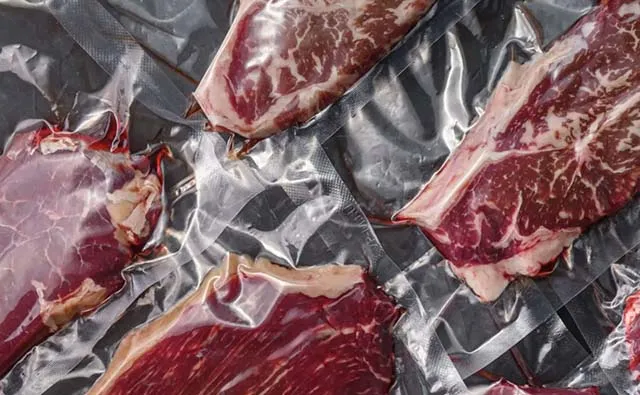Industry News, Food & Nutrition
The colour conundrum: Red or green packaging for plant-based meat?

Industry News, Food & Nutrition

A recent study by ‘food awareness’ non-profit ProVeg International revealed that meat eaters aremore wiling to try plant-based meat alternatives if they are clad in red packaging.
The study found that 56% of consumers in the UK, and 54% in the US, mentally connect thecolour red with superior taste when it comes to plant-based meat.
This is despite the fact that, according to ProVeg, most plant-based meat alternatives actuallyhave green packaging, including prominent brands such as Beyond Meat.
The packaging of any product has a lot of influence how a consumer will perceive said productbefore they buy it, According to ProVeg’s research, 65% of consumers admitted that colour has asianificant affect on what they buy.
The colour of packaging is an extremely important way to demarcate which type of consumer abrand is targeting. lt can completely change how a consumer perceives a product, and in turnaffect whether said consumer will buy it.
According to ProVeg’s research, orange packaging was the most likely to provoke consumers topurchase plant-based meat regularly, and use it as a replacement for conventional meat; and itwas blue that prompted consumers to pav a higher price. Yet it is red that appeals the most tomeat eaters.Why?
“Consumers often associate the colour red with tastiness due to its strong visual andpsychological impact. Red is a stimulating colour that evokes excitement and passion, closelylinked to the sensory experience of eating flavourful foods. Historically, red has been associatedwith ripeness and freshness in foods such as berries, tomatoes, and meat, reinforcing theperception of tastiness,” Aisa Spahic, Project Coordinator at ProVeg international, and the report’sresearch lead, told FoodNavigator.
“Additionally, marketing and branding practices havefrequently used red to highlight deliciousness and qualityfurther ingraining this association in consumer minds.
Red appeals to all consumers, Spahic suggested, althoughnot necessarily in the same way. “The association of redwith tastiness is generally strong among all consumergroups, including vegetarians and vegans. However, theimpact might be slightly different. While meat-eaters mayassociate red with the traditional colour of meat,vegetarians and vegans might perceive red as a signal ofbold flavours and satisfying taste in plant-based products.”
US-based plant-based meat brand lmpossible Foods alsorecently announced that it will change its packaging fromgreen to red. The change reflects not only a shift in itscolour, but in its message.
“Our green aesthetic didn’t exactly match how craveableour products are,” Leslie Sims, chief marketing and creativeofficer at lmpossible Foods, told FoodNavigator.
“We pretty quickly understood if we want to appeal to meateaters, we can’t show up like a plant. We need to show uplike meat. So we designed our entire rebrand effort aroundthis new, bold red colour to visually mirror our superiortaste. lt reads much more ‘meaty’ and stands out on the shelf in a way that more closely aligns with other meat products.
“We’ve always said that we belong in the meat aisle, and now our packaging and overall brandidentity reflects that.”
Impossible is aiming to change its brand identity: rather than being something aimed just atvegetarians and vegans, it wants to appeal to meat eaters as well.
“We love our plant-based fans and will never take their support for granted, but the reality is that90% of our consumers eat animal meat too and they’re growing more flexible on how often andwhen they consume animal protein.
“We don’t want to shame them for loving meat nor should they feel like they have to completelychange their lifestyles in order to make better food choices. They can keep eating meat -justmake it meat from plants.”
The company’s green packaging, while conveying sustainability well, ‘didn’t resonate’ as muchwhen it came to conveying taste. The brand thus wants to put taste first and foremost.
“Sustainability is absolutely still important, but we’ve seen that at the outset, it’s not enough of amotivator on its own to convince meat eaters to forego their tried-and-true animal meat options.